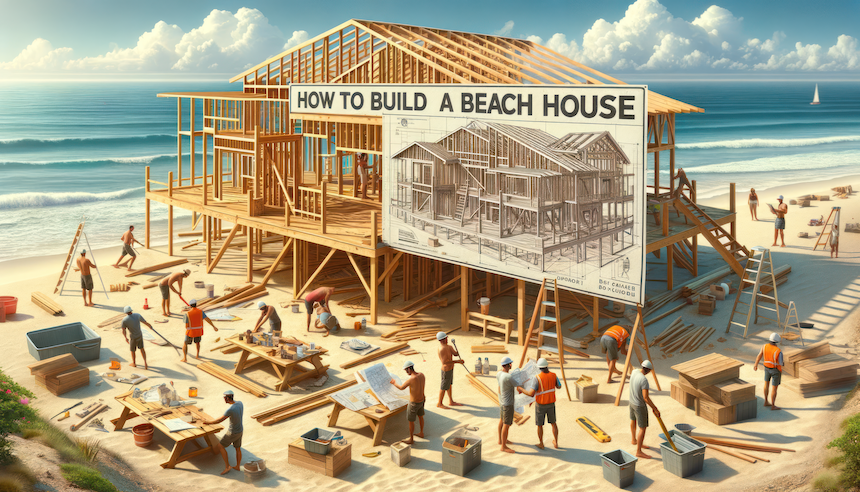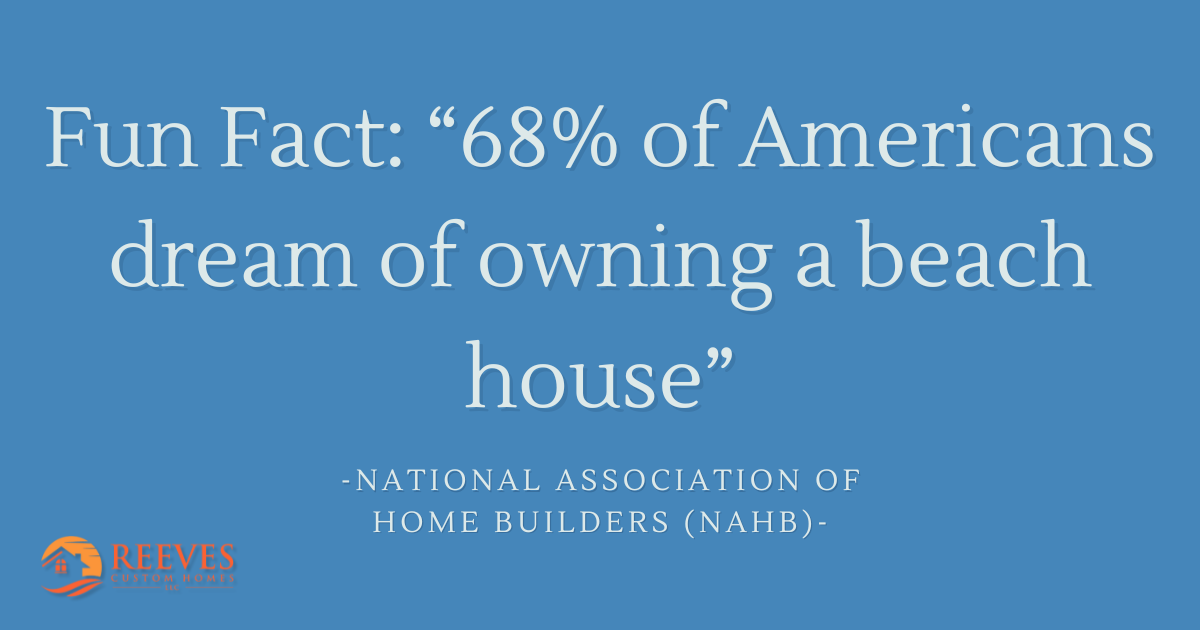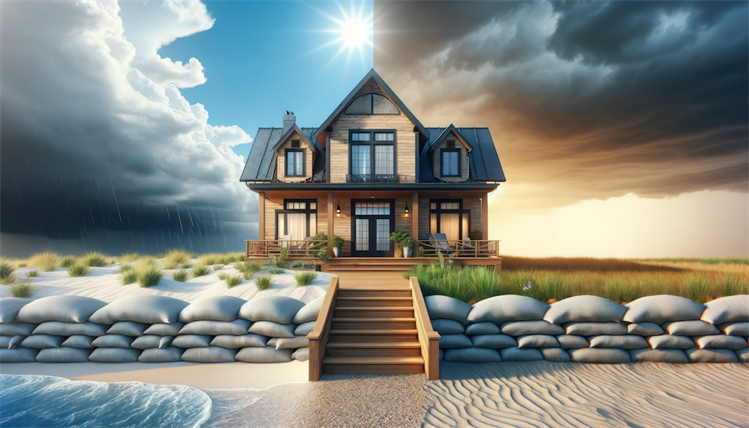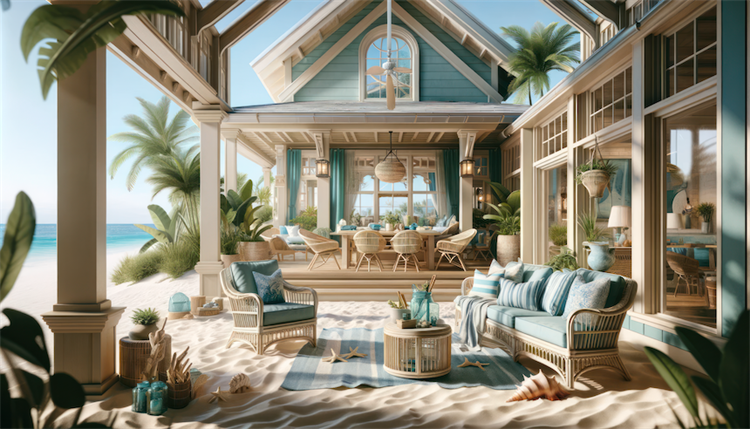
How to Build a Beach House: Essential Tips for Durable Coastal Living
Building a beach house involves more than picking a scenic spot by the ocean.
From understanding the impact of coastal elements to choosing durable materials, it's essential to plan for longevity and protection against harsh weather. With careful design and the right materials, you can create a beach home that stands strong against time and tide.
Follow these essential tips to ensure your dream home is built to last in a coastal environment.
Table of Contents:
Selecting the Perfect Location
Designing for Durability
Protecting Against the Elements
Maximizing Outdoor Living
Beach-Friendly Interior and Exterior Decor
Conclusion
FAQs
Key Takeaways:
- Location selection should prioritize safety from erosion and weather.
- Design for durability must consider foundation, structure, and materials.
- Protective measures against the elements include knowing Base Flood Elevation and using resilient materials.
- Maximizing outdoor space enhances the beachside living experience.
- Beach-friendly décor combines aesthetics with functionality and durability.

Selecting the Perfect Location
When dreaming of a beach house, the first image that comes to mind might be a home right on the sandy shore.
However, safety should be the top priority when selecting the location of your coastal abode. Not all shorelines are created equal; some may be prone to water-driven erosion and loose earth beneath the dunes.
To ensure a solid foundation for your beach house, consider the following:
| Factor | Description | Importance |
| Proximity to Shore | Homes closer to the shore face a greater risk of erosion and storm impact. | Choose a location a safe distance from the immediate shore. |
| Sand Corrosion | Look for signs of sand corrosion that could weaken foundations. | An ideal location has stable soil with no signs of corrosion. |
| Historical Weather Patterns | Areas with good beaches may also be prone to severe weather. | Research the area's storm history to gauge future risk. |
If you're considering a property that's a bit too close to the water's edge, remember that marine construction is highly specialized and often requires expert consultancy to navigate complex regulations and environmental challenges.
To explore how your location fits within the broader context of your dream home, visit Reeves Custom Homes to see how they've successfully built luxurious and enduring homes in various settings.
Designing for Durability
The very essence of a beach house's design should revolve around its ability to withstand the unique challenges posed by its environment.
Durability is not just a feature but a necessity for coastal homes. Here's how to make sure your beach house remains standing strong against the forces of nature:
1) Foundation Considerations and Materials
The foundation of your beach house is arguably the most critical aspect of its construction. It has to be robust enough to withstand the natural forces it will be subjected to.
For homes that are not directly on the beachfront but still near the coast, concrete beams are often used. On the other hand, homes on the shoreline may require helical pilings for additional support in sandy soils.
2) Structural Requirements and Wind Resistance
The structural integrity of a beach house is tested by high winds and corrosive salt air. Building codes and wind-speed maps play a significant role in determining the requirements for your specific location.
Structural reinforcements, such as hold-down hardware, special nailing, bracing, and reinforced shear walls, are essential to prevent the house from being torn apart by high winds.
For detailed insights into creating a durable structure that can withstand coastal elements, consider checking out Reeves Custom Homes' features where durability meets design elegance.
3) Choosing the Right Materials for Longevity and Protection
The longevity of your beach house greatly depends on the materials used in its construction. Opting for materials that have a high tolerance to salt air and are resistant to harsh weather is crucial.
Non-cellular PVC, fiberglass, and concrete are all excellent choices for their functional and aesthetic appeal, and much better alternatives to metal, which deteriorates quickly when exposed to salt air.
| Material | Benefits | Application |
| Concrete | Durable, low maintenance | Foundations, beams |
| Cedar | Naturally resistant to decay | Siding, decking |
| Non-cellular PVC | Resistant to salt air | Exterior trim, siding |
| Fiberglass | Strong, durable | Windows, doors |
Protecting Against the Elements

Knowing the Base Flood Elevation (BFE) for your property is vital. The BFE is a standard that FEMA uses to indicate the risk of flooding. It's essential for beach house owners to build at least four feet above this line to prevent flood damage during storms.
For those who want to delve deeper into understanding the risks and protections against flooding, FEMA's BFE Tool provides invaluable information to inform your construction plans.
For additional insights into flood protection and elevation considerations, the blog posts on building custom homes at Reeves Custom Homes offer a wealth of knowledge from industry experts.
1) Utilizing Protective and Long-Lasting Materials
Beyond the foundation and structural integrity, the materials used for the roof, walls, and openings must be chosen with the ocean environment in mind. Standing seam metal roofs are not just stylish but also offer superior protection in windy conditions.
When considering siding, materials like fiber cement or high-quality vinyl can withstand the salty air and require little maintenance, thus extending the lifespan of your home.
| Roofing Type | Wind Resistance | Maintenance |
| Standing Seam Metal | High | Low |
| Fiber Cement Siding | Good | Low |
| Vinyl Siding | Good | Low |
2) Wind and Weather Considerations
Constructing a beach house requires an understanding of the local climate, particularly the wind and storm potential. Low slope and hip roof systems can reduce wind loads, which is crucial in areas frequently hit by hurricanes and tropical storms.
Moreover, it's advisable to consult a weather surveyor who can provide a detailed analysis of the local weather patterns and help you design a house that's prepared for the worst nature can throw at it.
For a more in-depth discussion on how to build for the local climate, reach out to the experts at Reeves Custom Homes who can guide you through the nuances of coastal weather.
3) Planning for Climate Change
As we look to the future, it's important to consider the implications of climate change on coastal properties. Rising sea levels and the potential for more frequent and powerful storms mean that building a beach house is not just about handling the current environment but preparing for future changes as well.
Maximizing Outdoor Living
A beach house isn't just a shelter from the elements; it's a gateway to enjoying the outdoors.
An important aspect of beachside living is creating spaces that allow you to make the most of the sea breeze and stunning views while providing protection from the sun and elements.
1) Creating Outdoor Living Spaces
Outdoor living spaces such as patios and decks are essential for beach houses. They provide a seamless transition from indoors to outdoors, allowing you to enjoy the environment without leaving the comfort of your home.
Implementing features like a sunscreen roof over your patio can create a shaded area to relax in while still feeling connected to the beachfront setting.
2) Open-Concept Design for Airflow
An open-concept design not only creates a spacious feel inside the house but also promotes cross-ventilation, which is crucial in humid coastal climates.
Large sliding glass windows are not only aesthetically pleasing but functional, providing both ventilation and natural light to keep the interior air fresh and prevent mold and mildew.
To view examples of open-concept designs and how they enhance beach houses, peruse the gallery at Reeves Custom Homes, showcasing some of their most stunning coastal projects.
Beach-Friendly Interior and Exterior Decor

The interior and exterior of your beach house should reflect the ease and comfort of beach living while being robust enough to handle the coastal climate.
The décor elements must be able to withstand the harsh sun, salty air, and sandy conditions that are a natural part of life by the sea.
1) Choosing Durable Materials
When selecting materials for your beach house, consider those that are not only stylish but can also stand up to the environment.
For flooring, laminated options are excellent as they are durable, warp-resistant, and easy to clean—a must when sand and water are regular visitors to your space.
| Flooring Options | Durability | Ease of Cleaning |
| Laminated Floors | High | High |
| Natural Fiber Rugs | Moderate | Moderate |
| Tile | High | High |
For furniture, it's wise to use pieces that have washable slipcovers to easily shake off the sand and salt. Natural fiber rugs like sisal are preferable over wall-to-wall carpeting as they can withstand sandy and wet feet.
To get inspired by interior options that are as stylish as they are durable, take a look at Reeves Custom Homes' bedroom features, which demonstrate how comfort meets resilience.
2) Utilizing Smart Home Designs
A smart design for a beach house goes beyond aesthetics—it's about making life easier and more enjoyable. For example, an outdoor shower can be a practical addition, preventing the indoors from becoming sandy.
Sliding glass windows not only provide a view but also enhance ventilation, keeping the air inside your beach house fresh and reducing the risk of mold and mildew.
3) Outdoor Spaces That Embrace the Beach Lifestyle
Your outdoor space should be a continuation of the living area, with a porch or deck acting as an intermediary zone. Upgrading your patio with a sunscreen roof not only allows you to enjoy the outdoors without the sunburn but also adds to the aesthetic appeal of your home. Furnishing this space with weather-resistant chairs and side tables ensures that you can enjoy the sea breeze in comfort.
| Outdoor Elements | Functionality | Weather Resistance |
| Sunscreen Roof | High | High |
| Outdoor Furniture | High | High |
| Outdoor Shower | High | High |
For comprehensive guidance on creating outdoor spaces that stand out, consider reading through the insights provided on Reeves Custom Homes' blog about crafting your dream home, which offers valuable tips from the initial design to the finishing touches.
4) Embracing Sustainability
Incorporating sustainable practices into your beach house design not only benefits the environment but can also lead to long-term cost savings. This includes selecting materials and technologies that minimize energy consumption and waste.
Consider solar panels for energy, rainwater harvesting systems for irrigation, and sustainable materials that reduce the need for frequent replacements.
Conclusion
Building your dream beach house is within reach, and the journey from blueprint to beachside is one we'd be thrilled to guide you through.
Whether it's finding the perfect location, selecting sustainable materials, or ensuring your home is ready to weather the climate of tomorrow, Reeves Custom Homes is your partner in creating a coastal retreat that's built to last.
Don't let the tides of uncertainty hold you back. Reach out to us through our contact page or give us a call at 910-279-0173 to start turning the tide on your dream beach house today.
FAQs
As you move forward with your beach house project, you may have questions that arise. Here are some of the common queries that potential beach house owners have:
Q: What are the most critical issues in designing and building a beach house?
- A: The design and build of a beach house should prioritize the home's ability to withstand environmental forces like wind, water, and salt. This includes considering soil conditions, the distance from the shore, exposure to the elements, and local building codes.
Q: How can I ensure my beach house withstands severe weather?
- A: Building above the Base Flood Elevation, using wind-resistant materials for the structure, windows, and roofing, and consulting with weather surveyors for climate-specific designs can greatly increase your home's resilience.
Q: What building materials are best suited for a beach house?
- A: Materials that are resistant to moisture, salt air, and extreme weather conditions, such as concrete, cedar, non-cellular PVC, fiberglass, and high-quality vinyl, are among the best choices for beach houses.
Q: How can I protect my beach house from rising sea levels and potential climate change?
- A: Consider building at an elevation higher than the current BFE, using breakaway walls for areas subject to flooding, and choosing sustainable materials and building practices that allow for adaptation to changing environmental conditions.
Q: How do I choose the right décor that is both attractive and functional for a beach house?
- A: Opt for furnishings that can handle the wear and tear of beach living. Materials should be resistant to dampness, salt, and sand. For outdoor areas, choose furniture that can withstand the elements. Indoors, easy-to-clean surfaces and washable fabrics will make maintenance simpler. Consider the use of slipcovers and durable flooring options like tile or treated wood that can handle the beach environment.
Q: What steps can I take to ensure my beach house is environmentally friendly?
- A: Utilize renewable energy sources, such as solar panels, and incorporate water-saving features like low-flow fixtures and rainwater harvesting systems. Choose building materials that are sustainably sourced and have a low environmental impact. Design with natural ventilation in mind to reduce the need for air conditioning, and landscape with native plants that require less water and maintenance.
Q: Can I use smart home technology in my beach house?
- A: Absolutely. Smart home technology can enhance the functionality, security, and efficiency of your beach house. Automated systems for lighting, temperature control, and security can all be tailored to the unique needs of a beachfront property. These systems can also be integrated with renewable energy sources to optimize their use and efficiency.
Related Posts:
- Questions To Ask A Home Builder: Your Guide to Choosing Right in Hampstead, NC
- How to Build a Beach House: Essential Tips for Durable Coastal Living
- What to Expect During the Custom Home Building Process
- Must-Know Tips Before Building a Custom Home: Learn From the Experts
- The Benefits of Building a Custom Home
- Crafting Your Dream Home: A Guide to Custom Home Design
